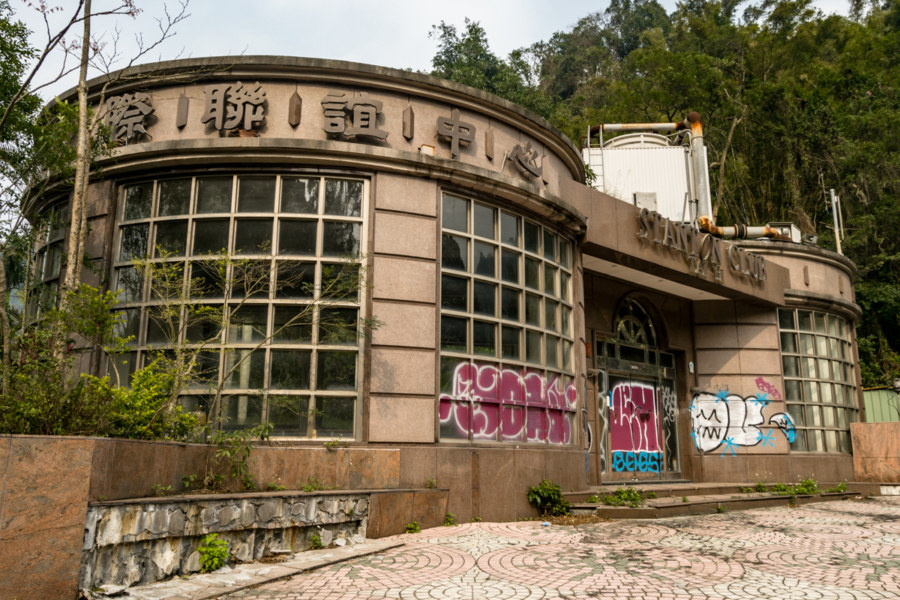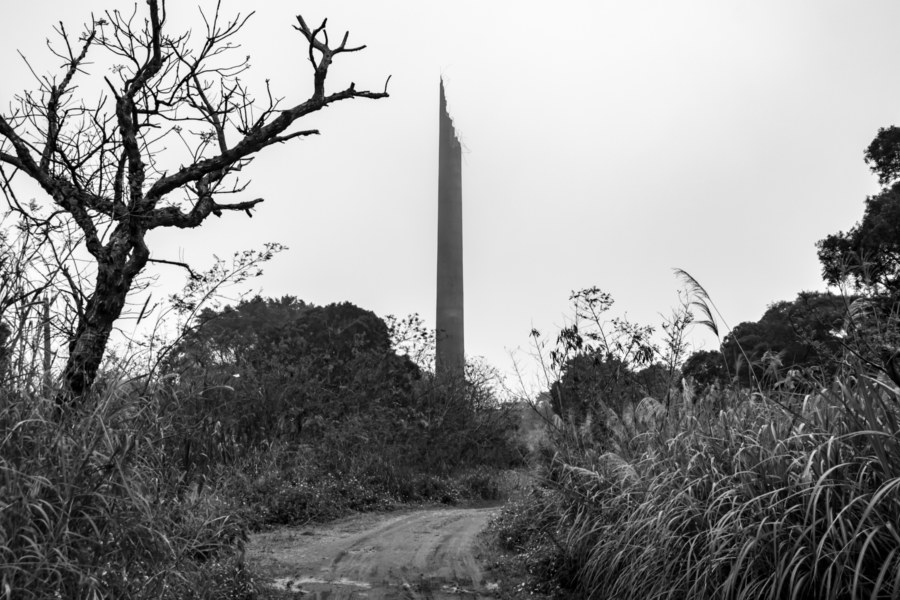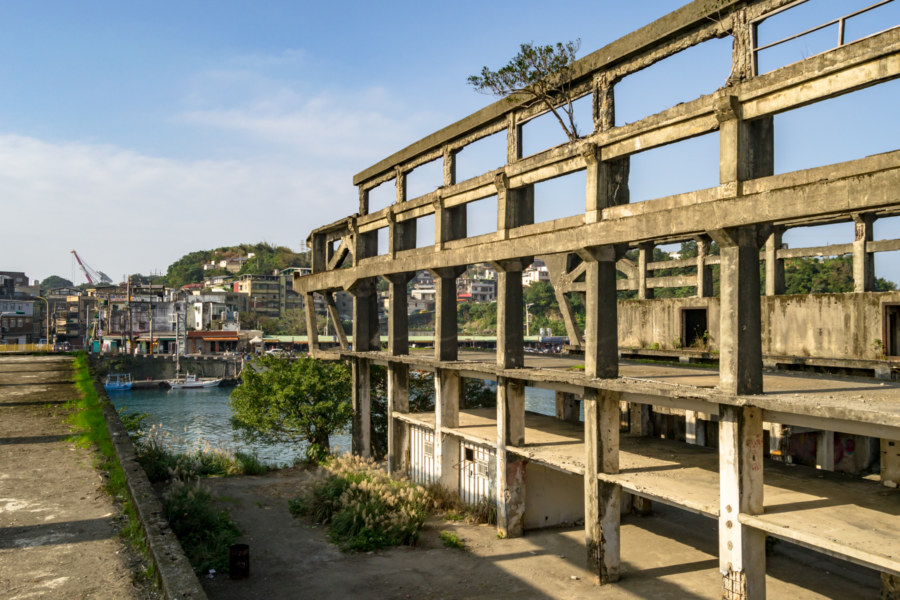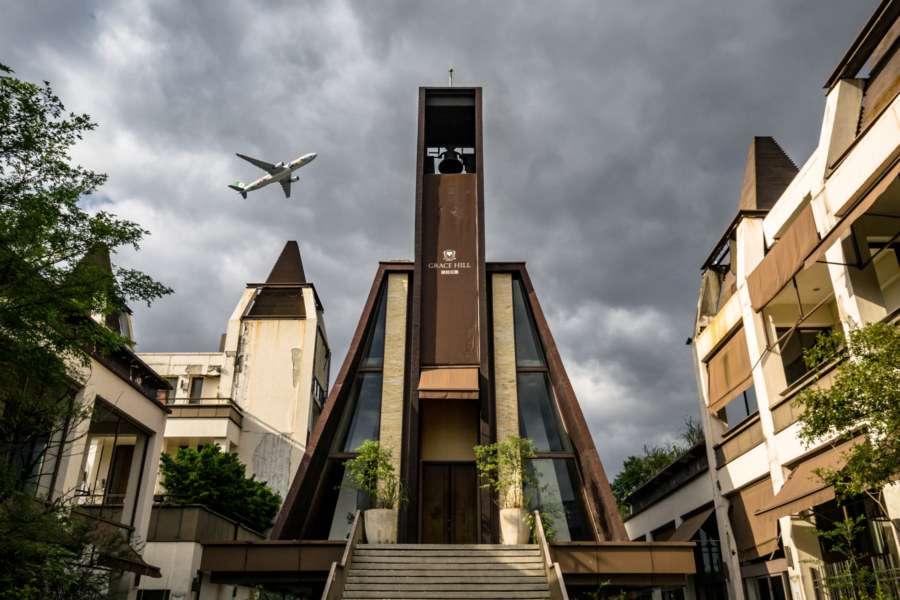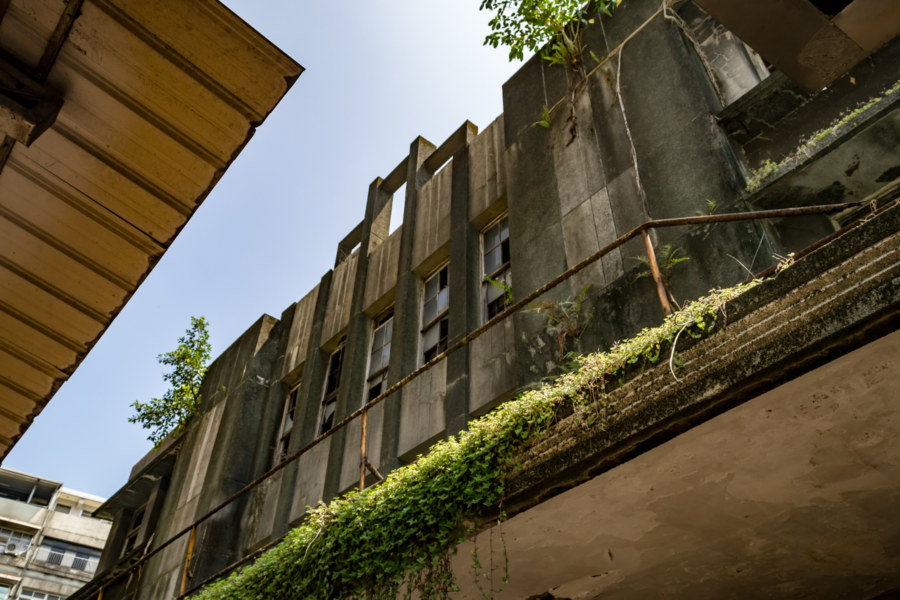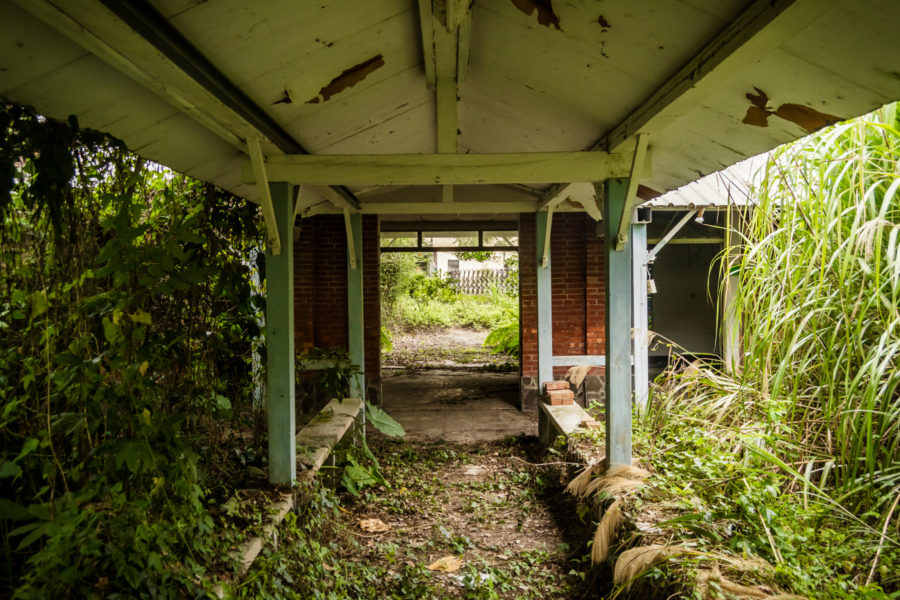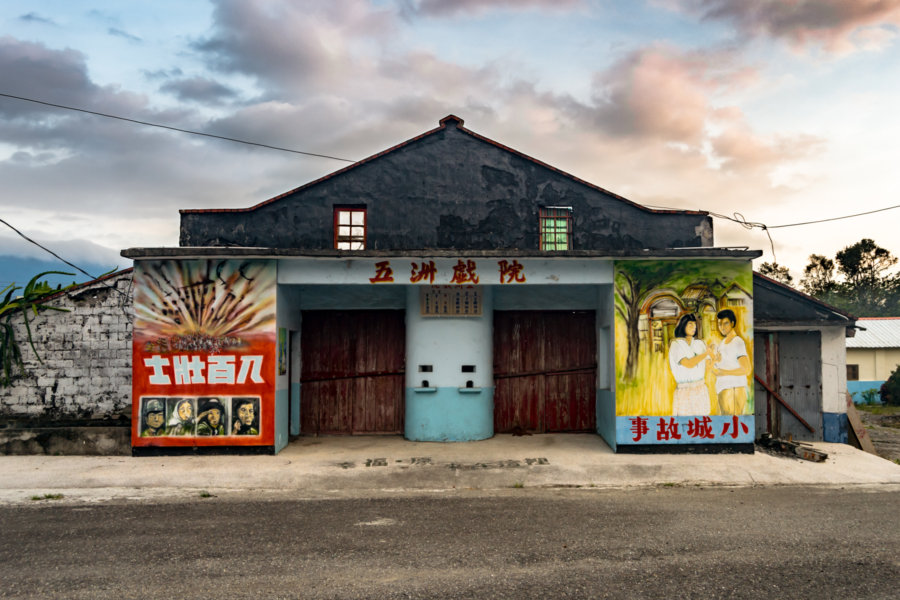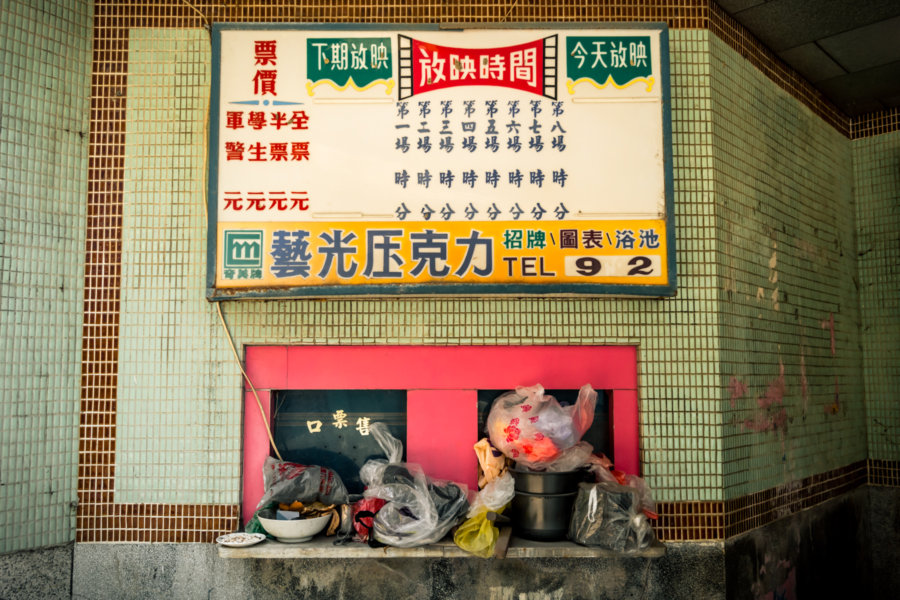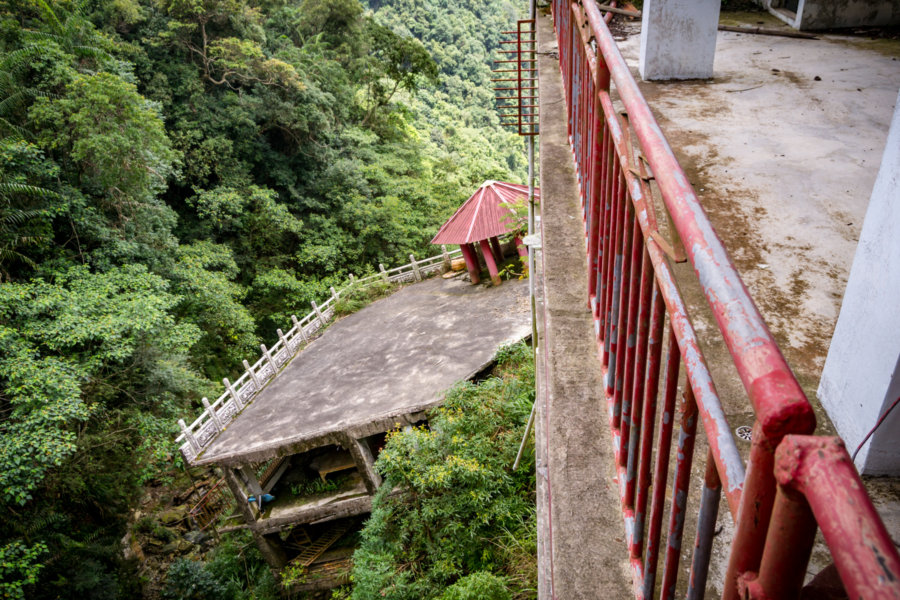The Stanton Club (飛宏象山國際會議聯誼中心) was an exclusive business and recreation facility located in the foothills of the Nangang Mountains in Xinyi, Taipei. Although details are scant, it was in operation from the late 1990s until approximately 2005, when it went out of business for reasons unknown. Most of the club is underground—and with floorspace or around 3,500 ping, a Taiwanese unit of measurement corresponding to approximately 12,000m2, it was a rather large place. Perhaps owing to its relatively accessible location this became one of the most notorious ruins in Taipei for awhile, even appearing on television at times. The space was finally leased and renovated in 2018 so I am now at liberty to share some photos from several forays made to the site in previous years.
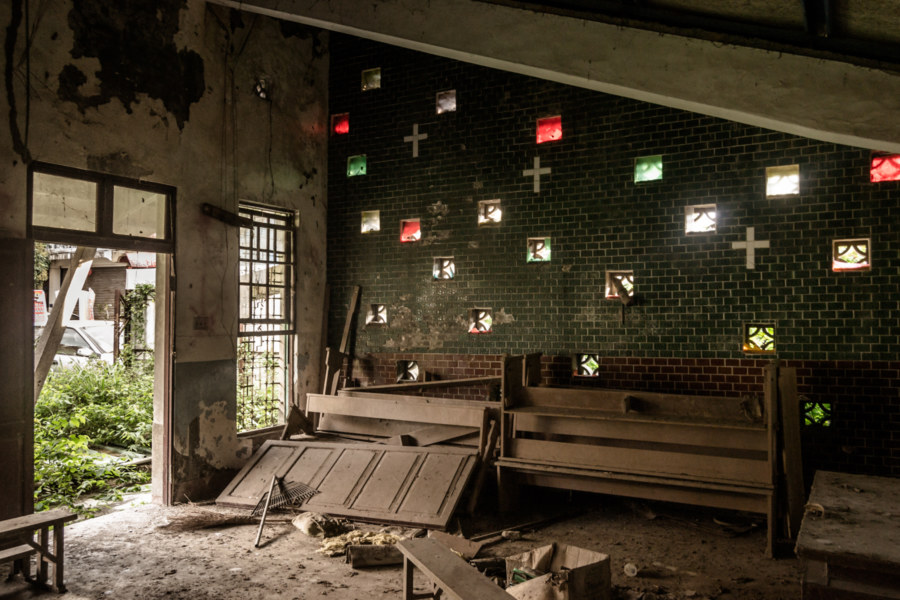
Taiwan is an unusually rich place for anyone interested in mapping out urban and industrial histories through the exploration of abandoned, disused, and neglected places. Gathered here are full reports and field notes from some of my many urban exploration (城市探險) adventures around the country.
Linkou Shengtai Brick Kiln 林口勝泰磚窯
Linkou, now the fastest-growing suburban district in the greater Taipei area, was once home to more than 30 brick factories, the highest concentration in northern Taiwan. Shèngtài Brick Kiln (勝泰磚窯), at the far northern extent of the Linkou Plateau, is one of the last remnants of this once-flourishing brick-making industry. Numerous ruins can be found across the sprawling site but the most impressive is a Hoffmann kiln, easily identified by its broken chimney. Hoffmann kiln technology was introduced to Taiwan during the Japanese colonial era but this particular kiln only dates back to the mid-1960s, and it has now been abandoned for many decades.
Yuanlin Credit Union 員林信用合作社
Yuanlin Credit Union 員林信用合作社 was a small town bank from Yuanlin, Taiwan, that went out of business at the turn of the century. It originated with a Japanese colonial era credit union founded in 1914 and based out of a long-vanished red brick building directly across from Yuanlin Station 員林車站, a plot of land now occupied by the doomed Golden Empire Building 黃金帝國大樓. In the post-war chaos the original credit union was renamed and reorganized several times, eventually giving birth to the credit union that constructed this particular branch, possibly in the late 1960s or early 1970s.
Agenna Shipyard 阿根納造船廠
Āgēnnà Shipyard 阿根納造船廠 is among the most popular abandoned places in northern Taiwan. It is located in the historic port city of Keelung across the narrow Bāchǐmén Channel 八尺門海峽 from Hépíng Island 和平島, site of the first Spanish settlement in Taiwan, and just around the corner from the equally photogenic Zhèngbīn Harbour 正濱漁港. The shipyard opened in 1967 but was only in business until the 1980s. After many years of neglect the skeletal ruins of the shipyard aroused renewed interest in 2016 when the current leaseholder attempted to demolish the structure. An immediate public outcry prompted the government to designate the shipyard a heritage property, and the cultural bureau is now formulating plans to develop the area into a tourist attraction of some kind. In the meantime, the crumbling ruins of the former shipyard attract hundreds or even thousands of daily visitors.
Grace Hill 麗庭莊園
Grace Hill (Lìtíng Zhuāngyuán 麗庭莊園) is a former wedding venue situated in an industrial park in Neihu, Taipei. It opened in 2005 under the management of the Zhǎngxìng Wedding Company (長興婚禮事業有限公司), an outfit keen to disrupt the local market with a larger, more extravagant space for weddings and other events. The business struggled at first but became more widely known after it was featured in television series, music videos, and the news. In 2007 the space was leased to Dears Brain (迪詩), a Japanese wedding company hoping to enter the Taiwanese luxury wedding market. The original owners took a step back, ceding control of day-to-day operations to Japanese management, and the business continued to grow over the next several years.
Keelung Dahua Theater 基隆大華戲院
Dàhuá Theater 大華戲院 is an early post-war movie theater in the grim northern port town of Keelung City, Taiwan. It was in business as early as 1949 and officially registered by 1952. Beyond that, little trace of it can be found online. Until recently I assumed this theater had been demolished, just like every other vintage standalone in downtown Keelung, one of the most densely-packed urban environments in the nation. Acting on a tip that a signboard was still in place I went to scope it out one afternoon in 2018—and was completely surprised to find the theater still standing, albeit in an extremely dilapidated condition.
Puli Tuberculosis Sanatorium 埔里肺結核療養所
Tuberculosis remains the deadliest communicable disease in Taiwan, claiming approximately 600 lives per year, but great strides have been made in reducing its toll throughout the 20th century. Nearly 5% of the population were afflicted by the disease in the late 1940s—and with an annual mortality rate of 3 in 1,000, it was also among the leading causes of death of any kind in post-war Taiwan. The disease was especially prevalent among the Taiwanese Indigenous people of the remote mountainous interior, who simply couldn’t afford to see a doctor or purchase medicine (even if there were a clinic anywhere nearby).
Christian missionary organizations went to great lengths to expand access to medical services in the late 1950s, founding numerous clinics and sanatoriums in Indigenous territory all across Taiwan. In 1957 this particular tuberculosis sanatorium was constructed next to a secluded lake on the outskirts of Puli, Nantou, to provide free treatment and relief for people of the mountains. The next several decades saw great advances in healthcare in Taiwan and the sanatorium closed in 1980, its purpose fulfilled. It reopened as a Presbyterian retreat center and campground in the late 1980s and was ultimately abandoned to the elements sometime in recent years.
Chishang Wuzhou Theater 池上五洲戲院
Wǔzhōu Theater (五洲戲院) is the last remnant of cinema in Chishang, Taitung, a picturesque town located in the fertile Huadong Valley of Taiwan. Built in 1965 in the midst of the Taiwan Economic Miracle, it remained in business until 1982. After the final screening the theater was neglected for decades, falling into disrepair but remaining more or less intact until recently. More recently Chishang emerged as a tourist destination, prompting a local community development association to invest in revitalizing the theater in 2013.
Xiluo Yuandong Theater 西螺遠東戲院
Xiluo is a small historic town in rural Yunlin, Taiwan. Despite its diminutive size Xiluo was once home to three standalone movie theaters: the eponymous Xiluo Theater (西螺戲院), Yisheng Theater (一生戲院), and Yuǎndōng Theater (遠東戲院, literally “Far East Theater”), the subject of this brief report. Previously I misidentified Yisheng Theater as Yuandong, something I only learned after visiting a photo exhibition at Huashan 1914 Creative Park in 2017. After realizing my mistake I went to some lengths to locate and later visit this theater—which, in hindsight, I’ve passed on several occasions without noticing it down a small side street of the same name.
Lingxiao Temple 凌霄殿
The ruins of the former Língxiāo Temple 凌霄殿 can be found in the foothills of the Central Mountain Range 中央山脈 in Puli, Nantou. Likely named after the Chinese trumpet creeper, Campsis grandiflora (中文), it was founded in 1983 by local philanthropist Chen Chou 陳綢, famous across Taiwan for her charity work. The temple is quite remote, more than 10 kilometers down an old forestry road with no other exit, perched on the hillside at an elevation of 1,300 meters (for reference, the Puli Basin 埔里盆地 is around 500 meters above sea level).
